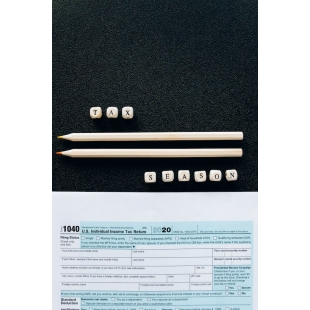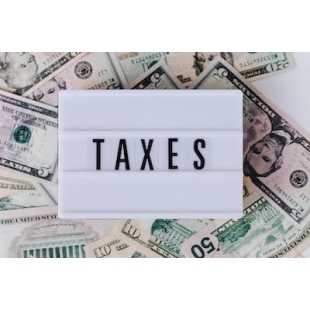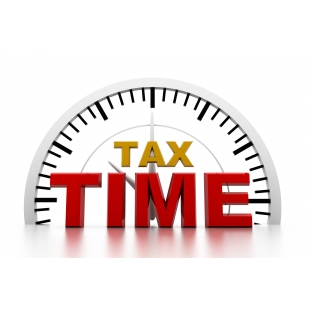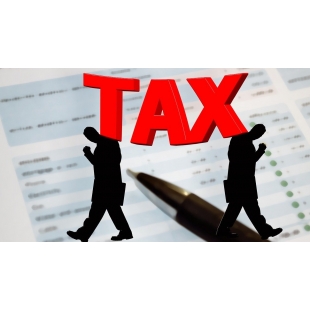US Tax information update
-

Tax Time Guide: Things to consider when filing a 2022 tax return
IR-2023-32, Feb. 22, 2023
WASHINGTON — With the 2023 tax filing season in full swing, the Internal Revenue Service reminds taxpayers to gather their necessary information and visit IRS.gov for updated resources and tools to help with their 2022 tax return.
This news release is part of a series called the Tax Time Guide, a resource to help taxpayers file an accurate tax return. Additional guidance is available in Publication 17, Your Federal Income Tax (For Individuals).
Things to consider before filing
Taxpayers should wait to file until they receive all their proper tax documents, or they risk making a mistake that could cause delays.
They should also review their documents carefully. If any of the information is inaccurate or missing, taxpayers should contact the payer right away for a correction or to ensure the issuer has their current mailing or email address.
Creating an IRS Online Account can help taxpayers securely access information about their federal tax account, including payments, tax records and more.
Organized tax records make preparing a complete and accurate tax return easier and may help taxpayers find overlooked deductions or credits.
Taxpayers with an Individual Taxpayer Identification Number or ITIN may need to renew it if it's expired and is needed on a U.S. federal tax return. If they don't renew an expiring or expired ITIN, the IRS can still accept their return, but it may delay processing or credits owed.
Changes to credits and deductions for tax year 2022
Unlike 2020 and 2021, there were no new stimulus payments for 2022, so taxpayers should not expect to get an additional payment in their 2023 tax refund.
However, taxpayers may still qualify for temporarily expanded eligibility of the Premium Tax Credit, a refundable credit that helps eligible individuals and families cover the premiums for their health insurance purchased through the Health Insurance Marketplace. To get this credit, taxpayers must meet certain requirements and file a tax return with Form 8962, Premium Tax Credit.
Also, eligibility rules changed to claim a Clean Vehicle Credit under the Inflation Reduction Act of 2022.
Some tax credits return to 2019 levels. This means that taxpayers will likely receive a significantly smaller refund compared with the previous tax year.
Changes include amounts for the Earned Income Tax Credit (EITC), the Child Tax Credit (CTC) and the Child and Dependent Care Credit will revert to pre-COVID levels.
For the EITC, eligible taxpayers with no children who received roughly $1,500 in 2021 will now get $560 for the 2022 tax year.
Those who got $3,600 per dependent in 2021 for the CTC will, if eligible, get $2,000 per dependent for the 2022 tax year.
The Child and Dependent Care Credit returns to a maximum of $2,100 in 2022 instead of $8,000 in 2021.
Finally, taxpayers that don't itemize and take the standard deduction cannot deduct their charitable contributions this year.
Transition year for 1099-K reporting
There are no changes to what counts as income or how tax is calculated, including income from the sale of personal assets. Taxpayers must report all their income on their tax return unless it's excluded by law.
Form 1099-K, Payment Card and Third-Party Network Transactions, is an IRS information return used to report certain payment transactions and helps to improve voluntary tax compliance. Taxpayers use this information return with their other tax records to determine their correct tax liability. 2022 Forms 1099-K should have been furnished to the payee by Jan. 31, 2023.
The American Rescue Plan of 2021 changed the reporting threshold for third-party settlement organizations, including payment apps and online settlement organizations. The new threshold requires reporting of transactions in excess of $600 per year; changed from the previous threshold of an excess of $20,000 and an excess of 200 transactions per year. Third-party settlement organizations are required to report payments for goods and services.
On Dec. 23, 2022, the IRS announced that calendar year 2022 will be treated as a transition year for the reduced reporting threshold of $600.
Even though the Form 1099-K reduced reporting requirement for third-party settlement organizations is delayed, some individuals may still receive a Form 1099-K who have not received one in the past. Some individuals may receive a Form 1099-K for the sale of personal items or in situations where they received a Form 1099-K in error (i.e. for transactions between friends and family, or expense sharing).
Money received as a gift or to reimburse shared meals or rent should not be reported on a 1099-K. Payments should indicate whether they are personal to family and friends or a business transaction for goods and services.
If the information is incorrect on the 1099-K, taxpayers should contact the payer immediately. The payer's name appears in the upper left corner on the form. The taxpayer should keep a copy of all correspondence with the payer with their records.
If a Form 1099-K is received in error and a corrected Form 1099-K can't be obtained, follow the IRS' updated guidance at Understanding Your Form 1099-K.
Source: https://www.irs.gov/newsroom/tax-time-guide-things-to-consider-when-filing-a-2022-tax-return
US TAX, U.S. TAXTax Time Guide: Things to consider when filing a 2022 tax returnmore -

Understanding the Credit for Other Dependents
IRS Tax Tip 2023-22, February 21, 2023
Taxpayers with dependents who don't qualify for the Child Tax Credit may be able to claim the Credit for Other Dependents. They can claim this credit in addition to the Child and Dependent Care Credit and the Earned Income Credit.
Here's more information to help taxpayers determine whether they're eligible to claim the Credit for Other Dependents on their 2022 tax return.
The maximum credit amount is $500 for each dependent who meets certain conditions. This credit can be claimed for:
Dependents of any age, including those who are age 18 or older.
Dependents who have Social Security numbers or Individual Taxpayer Identification numbers.
Dependent parents or other qualifying relatives supported by the taxpayer.
Dependents living with the taxpayer who aren't related to the taxpayer.
The credit begins to phase out when the taxpayer's income is more than $200,000. This phaseout begins for married couples filing a joint tax return at $400,000.
A taxpayer can claim this credit if:
They claim the person as a dependent on the taxpayer's return.
They cannot use the dependent to claim the child tax credit or additional child tax credit.
The dependent is a U.S. citizen, national or resident alien.
Taxpayers can use the Does My Child/Dependent Qualify for the Child Tax Credit or the Credit for Other Dependents tool on IRS.gov to help determine if they are eligible to claim the credit.
More information:
Topic No. 602 Child and Dependent Care Credit
Earned Income Tax Credit
Resource: https://www.irs.gov/newsroom/understanding-the-credit-for-other-dependents
US TAX, U.S. TAXUnderstanding the Credit for Other Dependentsmore -

Interest rates remain the same for the second quarter of 2023
IR-2023-24, Feb. 13, 2023
WASHINGTON — The Internal Revenue Service today announced that interest rates will remain the same for the calendar quarter beginning April 1, 2023.
For individuals, the rate for overpayments and underpayments will be 7% per year, compounded daily. Here is a complete list of the new rates:
7% for overpayments (payments made in excess of the amount owed), 6% for corporations.
4.5% for the portion of a corporate overpayment exceeding $10,000.
7% for underpayments (taxes owed but not fully paid).
9% for large corporate underpayments.
Under the Internal Revenue Code, the rate of interest is determined on a quarterly basis. For taxpayers other than corporations, the overpayment and underpayment rate is the federal short-term rate plus 3 percentage points.
Generally, in the case of a corporation, the underpayment rate is the federal short-term rate plus 3 percentage points, and the overpayment rate is the federal short-term rate plus 2 percentage points. The rate for large corporate underpayments is the federal short-term rate plus 5 percentage points. The rate on the portion of a corporate overpayment of tax exceeding $10,000 for a taxable period is the federal short-term rate plus one-half (0.5) of a percentage point.
The interest rates announced today are computed from the federal short-term rate determined during January 2023. See the revenue ruling for details.
Revenue Ruling 2023-4PDF announcing the rates of interest will appear in Internal Revenue Bulletin 2023-9, dated Feb. 27, 2023.
Source: https://www.irs.gov/newsroom/interest-rates-remain-the-same-for-the-second-quarter-of-2023
US TAX, U.S. TAXInterest rates remain the same for the second quarter of 2023more -
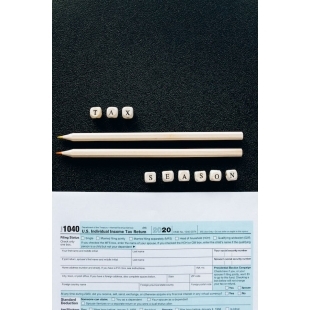
Key points to keep in mind when filing 2022 tax returns
IR-2023-17, January 31, 2023
WASHINGTON — To help taxpayers navigate the beginning of the tax filing season, the Internal Revenue Service today offered a checklist of reminders for people as they prepare to file their 2022 tax returns.
From gathering paperwork to filing a tax return, these easy steps will make tax preparation smoother in 2023:
1. Gather tax paperwork and records for accuracy to avoid missing a deduction or credit.
Taxpayers should have all their important and necessary documents before preparing their return. This helps people file a complete and accurate tax return. Errors and omissions slow down tax processing, including refund times.
Some information taxpayers need before they begin includes:
Social Security numbers for everyone listed on the tax return,
Bank account and routing numbers,
Various tax forms such as W-2s, 1099s, 1098s and other income documents or records of digital asset transactions,
Form 1095-A, Health Insurance Marketplace statement,
Any IRS letters citing an amount received for a certain tax deduction or credit.
2. Remember to report all types of income on the tax return.
This is important to avoid receiving a notice or a bill from the IRS. Don't forget to include income from:
Goods created and sold on online platforms,
Investment income,
Part-time or seasonal work,
Self-employment or other business activities,
Services provided through mobile apps.
3. File electronically with direct deposit to avoid delays in receiving a refund.
Avoid paper returns. Tax software helps individuals avoid mistakes by doing the math. It guides people through each section of their tax return using a question-and-answer format.
For those waiting on their 2021 tax return to be processed, here's a special tip to ensure their 2022 tax return is accepted by the IRS for processing. Make sure to enter $0 (zero dollars) for last year's adjusted gross income (AGI) on the 2022 tax return. Everyone else should enter their prior year's AGI from last year's return.
4. Free resources are available to help eligible taxpayers file online. Free help may also be available to qualified taxpayers.
IRS Free File provides a free online alternative to filing a paper tax return. IRS Free File is available to any individual or family who earned $73,000 or less in 2022.
With IRS Free File, leading tax software providers make their online products available for free as part of a 21-year partnership with the IRS. This year, there are seven products in English and one in Spanish. Taxpayers must access these products through the IRS website.
People who make over $73,000 can use the IRS' Free File Fillable Forms. These are the electronic version of IRS paper forms. This product is best for people who are comfortable preparing their own taxes.
Qualified taxpayers can also find free one-on-one tax preparation help around the nation through the Volunteer Income Tax Assistance (VITA) and Tax Counseling for the Elderly (TCE) programs.
5. Choose a tax professional carefully.
Most tax return preparers are professional, honest and provide excellent service to their clients. However, dishonest tax return preparers who file false income tax returns do exist. The IRS has a Directory of Federal Tax Return Preparers with Credentials and Select Qualifications and more on choosing a tax pro on IRS.gov.
6. Avoid phone delays; use online resources before calling the IRS.
To avoid waiting on hold, the IRS urges people to use IRS.gov to get answers to tax questions, check a refund status or pay taxes. There's no wait time or appointment needed — online tools and resources are available 24 hours a day. The IRS' Interactive Tax Assistant tool and Let Us Help You resources are especially helpful.
Additionally, the IRS suggests taxpayers stay up to date on important tax information online by:
Following the IRS' official social media accounts and email subscription lists to stay current on the latest tax topics and alerts.
Downloading the IRS2Go mobile app, watching IRS YouTube videos, or following the IRS on Twitter, Facebook, LinkedIn and Instagram for the latest updates on tax changes, scam alerts, initiatives, products and services.
Source: https://www.irs.gov/newsroom/key-points-to-keep-in-mind-when-filing-2022-tax-returns
US TAX, U.S. TAXKey points to keep in mind when filing 2022 tax returnsmore -
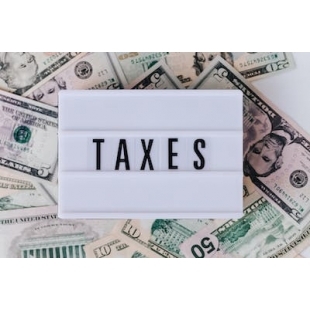
Tax basics: Understanding the difference between standard and itemized deductions
IRS Tax Tip 2023-03, January 10, 2023
One of the first decisions taxpayers must make when completing a tax return is whether to take the standard deduction or itemize their deductions. There are several factors that can influence a taxpayer's choice, including changes to their tax situation, any changes to the standard deduction amount and recent tax law changes.
Generally, most taxpayers use the option that gives them the lowest overall tax.
As taxpayers begin to think about filing their tax return, here are some things they should know about standard and itemized deductions.
Standard deduction
The standard deduction amount increases slightly every year. The standard deduction amount depends on the taxpayer's filing status, whether they are 65 or older or blind, and whether another taxpayer can claim them as a dependent. Taxpayers who are age 65 or older on the last day of the year and don't itemize deductions are entitled to a higher standard deduction.
Most filers who use Form 1040 can find their standard deduction on the first page of the form. The standard deduction for most filers of Form 1040-SR, U.S. Tax Return for Seniors, is on the last page of that form.
According to the Instructions for Form 1040 and 1040-SR, not all taxpayers can take a standard deduction, including:
A married individual filing as married filing separately whose spouse itemizes deductions - if one spouse itemizes on a separate return, both must itemize.
An individual who files a tax return for a period of less than 12 months. This is uncommon and could be due to a change in their annual accounting period.
An individual who was a nonresident alien or a dual-status alien during the year. Nonresident aliens who are married to a U.S. citizen or resident alien, however, can take the standard deduction in certain situations.
Itemized deductions
Taxpayers who choose to itemize deductions may do so by filing Schedule A (Form 1040), Itemized Deductions. Itemized deductions that taxpayers may claim can include:
State and local income or sales taxes.
Real estate and personal property taxes.
Home mortgage interest.
Personal casualty and theft losses from a federally declared disaster.
Gifts to a qualified charity.
Unreimbursed medical and dental expenses that exceed 7.5% of adjusted gross income.
Some itemized deductions, such as the deduction for taxes, may be limited. Taxpayers should review the instructions for Schedule A (Form 1040) for more information on limitations.
More information:
How Much Is My Standard Deduction?
Topic No. 551, Standard Deduction
Source: https://www.irs.gov/newsroom/tax-basics-understanding-the-difference-between-standard-and-itemized-deductions
US TAX, U.S. TAXTax basics: Understanding the difference between standard and itemized deductionsmore -

The deadline for the final 2022 estimated tax payment is January 17
IRS Tax Tip 2023-04, January 11, 2023
Many taxpayers make quarterly estimated tax payments during the year to stay current on their taxes. Anyone who paid too little tax in 2022 needs to make a fourth quarter payment on or before January 17 to avoid an unexpected potential tax bill or penalty when they file in 2023.
Here's who needs to make a payment
Taxpayers who earn or receive income that is not subject to tax withholding such as self-employed people or independent contractors should pay their taxes quarterly to the IRS.
In addition, people who owed tax when they filed their current year tax return often find themselves in the same situation again when they file the next year, so they may want to consider making estimated tax payments. Taxpayers in this situation often include:
Those who itemized in the past but are now taking the standard deduction
Two wage-earner households
Employees with non-wage sources of income such as dividends
Those with complex tax situations
Those who didn't increase their tax withholding
Understanding what's taxable
Most income is taxable, including employment income, refund interest and income from the gig economy and digital assets. When estimating quarterly tax payments, taxpayers should include all forms of earned income, including from part-time work, side jobs or the sale of goods.
Also, various financial transactions, especially those made late in the year, can have an unexpected tax impact that may call for estimated tax payments. Examples include year-end and holiday bonuses, stock dividends, capital gains distributions from mutual funds, and stocks, bonds, virtual currency, real estate or other property sold at a profit
Delay in requirement for Forms 1099-K
On December 23, 2022, the IRS announced that calendar year 2022 will be treated as a transition year for the reduced reporting threshold of $600. For calendar year 2022, third-party settlement organizations that issue Form 1099-K are only required to report transactions where gross payments exceed $20,000 and there are more than 200 transactions. The IRS also issued frequently asked questions to help people who may receive Forms 1099-K.
Taxpayers must accurately report all income, even if they do not receive a Form 1099-K or other information return.
How to make an estimated tax payment
The fastest and easiest way taxpayers can make an estimated tax payment is to do so electronically using IRS Direct Pay. Taxpayers can schedule a payment before the January 17 deadline. They can also make a payment through their IRS Online Account or the Electronic Filing Tax Payment System.
More information on other payment options is available at Pay Online.
Stay current using the Withholding Estimator
The Tax Withholding Estimator on IRS.gov can often help people determine if they need to make an estimated tax payment. It also helps people calculate the correct amount of tax to withhold throughout the year based on their complete set of tax facts and circumstances. Taxpayers can also use the worksheet included with estimated tax Form 1040-ES, Estimated Tax for Individuals, or read through Publication 505, Tax Withholding and Estimated Tax.
Source: https://www.irs.gov/newsroom/interest-rates-increase-for-the-first-quarter-of-2023
US TAX, U.S. TAXThe deadline for the final 2022 estimated tax payment is January 17more -

Get Ready for taxes: What's new and what to consider when filing in 2023
IR-2022-213, December 6, 2022
WASHINGTON — The Internal Revenue Service encouraged taxpayers to take important actions this month to help them file their 2022 federal tax returns.
This is the second in a series of reminders to help taxpayers get ready for the upcoming tax filing season. A "Get Ready" page outlines steps taxpayers can take now to make tax filing easier in 2023.
Here's what's new and some key items for taxpayers to consider before they file next year.
Reporting rules changed for Form 1099-K. Taxpayers should receive Form 1099-K, Payment Card and Third Party Network Transactions, by January 31, 2023, if they received third party payments in tax year 2022 for goods and services that exceeded $600.
There's no change to the taxability of income. All income, including from part-time work, side jobs or the sale of goods is still taxable. Taxpayers must report all income on their tax return unless it's excluded by law, whether they receive a Form 1099-K, a Form 1099-NEC, Nonemployee Compensation, or any other information return.
Prior to 2022, Form 1099-K was issued for third party networks transactions only if the total number of transactions exceeded 200 for the year and the aggregate amount of these transactions exceeded $20,000. The American Rescue Plan Act of 2021 lowered the reporting threshold for third party networks that process payments for those doing business.
Now a single transaction exceeding $600 can require the third party platform to issue a 1099-K. Money received through third party payment networks from friends and relatives as personal gifts or reimbursements for personal expenses is not taxable.
The IRS cautions people in this category who may be receiving a Form 1099 for the first time – especially "early filers" who typically file a tax return during the month of January or early February – to be careful and make sure they have all of their key income documents before submitting a tax return. A little extra caution could save people additional time and effort related to filing an amended tax return. And if they have untaxed income on a Form 1099 that isn't reflected on the tax return they initially file, that could mean they need to submit a tax payment with an amended tax return.
If the information is incorrect on the 1099-K, taxpayers should contact the payer immediately, whose name appears in the upper left corner on the form. The IRS cannot correct it.
Some tax credits return to 2019 levels. This means that affected taxpayers will likely receive a significantly smaller refund compared with the previous tax year. Changes include amounts for the Child Tax Credit (CTC), Earned Income Tax Credit (EITC) and Child and Dependent Care Credit.
Those who got $3,600 per dependent in 2021 for the CTC will, if eligible, get $2,000 for the 2022 tax year.
For the EITC, eligible taxpayers with no children who received roughly $1,500 in 2021 will now get $500 in 2022.
The Child and Dependent Care Credit returns to a maximum of $2,100 in 2022 instead of $8,000 in 2021.
Visit Credits and Deductions for more details.
No above-the-line charitable deductions. During COVID, taxpayers could take up to a $600 charitable donation tax deduction on their tax returns. However, in 2022, those who take a standard deduction may not take an above-the-line deduction for charitable donations.
More people may be eligible for the Premium Tax Credit. For tax year 2022, taxpayers may still qualify for temporarily expanded eligibility for the premium tax credit.
Eligibility rules changed to claim a tax credit for clean vehicles. Review the changes under the Inflation Reduction Act of 2022 to qualify for a Clean Vehicle Credit.
Avoid refund delays and understand refund timing
Many different factors can affect the timing of a refund after the IRS receives a return. Although the IRS issues most refunds in less than 21 days, the IRS cautions taxpayers not to rely on receiving a 2022 federal tax refund by a certain date, especially when making major purchases or paying bills. Some returns may require additional review and may take longer to process if IRS systems detect a possible error, the return is missing information or there is suspected identity theft or fraud.
Also, the IRS cannot issue refunds for people claiming the EITC or Additional Child Tax Credit (ACTC) before mid-February. The law requires the IRS to hold the entire refund – not just the portion associated with EITC or ACTC.
Last quarterly payment for 2022 is due on January 17, 2023
Taxpayers may need to consider estimated or additional tax payments due to non-wage income from unemployment, self-employment, annuity income or even digital assets. The Tax Withholding Estimator on IRS.gov can help wage earners determine if there is a need to consider an additional tax payment to avoid an unexpected tax bill when they file.
Gather 2022 tax documents
Taxpayers should develop a recordkeeping system − electronic or paper − that keeps important information in one place. This includes year-end income documents like Forms W-2 from employers, Forms 1099 from banks or other payers, Form 1099-K from third party payment networks, Form 1099-NEC for nonemployee compensation, Form 1099-MISC for miscellaneous income, or Form 1099-INT if you were paid interest, as well as records documenting all digital asset transactions.
Ensuring their tax records are complete before filing helps taxpayers avoid errors that lead to processing delays. When they have all their documentation, taxpayers are in the best position to file an accurate return and avoid processing or refund delays or IRS letters.
Sign in to Online Account
An IRS Online Account lets taxpayers securely access their personal tax information, including tax return transcripts, payment history, certain notices, prior year adjusted gross income and power of attorney information. Filers can log in to verify if their name and address are correct. They should notify IRS if their address has changed. They must notify the Social Security Administration of a legal name change to avoid a delay in processing their tax return.
Get banked to speed refunds with direct deposit
The fastest way to get a tax refund is by filing electronically and choosing direct deposit. Direct deposit is faster than waiting for a paper check in the mail. It also avoids the possibility that a refund check could be lost, stolen or returned to the IRS as undeliverable.
Don't have a bank account? Learn how to open an account at an FDIC-Insured bank or through the National Credit Union Locator Tool. Veterans should see the Veterans Benefits Banking Program (VBBP) for access to financial services at participating banks.
Prepaid debit cards or mobile apps may allow direct deposit of tax refunds. They must have routing and account numbers associated with them that can be entered on a tax return. Taxpayers can check with the mobile app provider or financial institution to confirm which numbers to use.
Bookmark resources
Taxpayers can download Publication 5348, Get Ready to FilePDF, or Publication 5349, Year-Round Tax Planning is for EveryonePDF, for more information to help them get ready to file.
Source:https://www.irs.gov/newsroom/get-ready-for-taxes-whats-new-and-what-to-consider-when-filing-in-2023
US TAX, U.S. TAXGet Ready for taxes: What's new and what to consider when filing in 2023more -

Interest rates increase for the first quarter of 2023
IR-2022-206, November 29, 2022
WASHINGTON — The Internal Revenue Service today announced that interest rates will increase for the calendar quarter beginning January 1, 2023.
For individuals, the rate for overpayments and underpayments will be 7% per year, compounded daily, up from 6% for the quarter that began on October 1. Here is a complete list of the new rates:
7% for overpayments (payments made in excess of the amount owed), 6% for corporations.
4.5% for the portion of a corporate overpayment exceeding $10,000.
7% for underpayments. (taxes owed but not fully paid)
9% for large corporate underpayments.
Under the Internal Revenue Code, the rate of interest is determined on a quarterly basis. For taxpayers other than corporations, the overpayment and underpayment rate is the federal short-term rate plus 3 percentage points.
Generally, in the case of a corporation, the underpayment rate is the federal short-term rate plus 3 percentage points and the overpayment rate is the federal short-term rate plus 2 percentage points. The rate for large corporate underpayments is the federal short-term rate plus 5 percentage points. The rate on the portion of a corporate overpayment of tax exceeding $10,000 for a taxable period is the federal short-term rate plus one-half (0.5) of a percentage point.
The interest rates announced today are computed from the federal short-term rate determined during October 2022. See the revenue ruling for details.
Revenue Ruling 2022-23PDF announcing the rates of interest will appear in Internal Revenue Bulletin 2022-51, dated December 19, 2022.
Source: https://www.irs.gov/newsroom/interest-rates-increase-for-the-first-quarter-of-2023
US TAX, U.S. TAXInterest rates increase for the first quarter of 2023more -
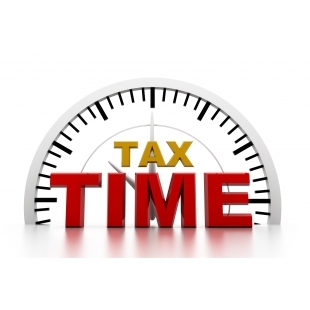
Get Ready now to file your 2022 federal income tax return
Issue Number: IR-2022-203 November 22, 2022
WASHINGTON — The Internal Revenue Service today encouraged taxpayers to take simple steps before the end of the year to make filing their 2022 federal tax return easier. With a little advance preparation, a preview of tax changes and convenient online tools, taxpayers can approach the upcoming tax season with confidence.
Filers can visit the Get Ready webpage at IRS.gov/getready to find guidance on what’s new and what to consider when filing a 2022 tax return. They can also find helpful information on organizing tax records and a list of online tools and resources.
Get Ready by gathering tax records:
When filers have all their tax documentation gathered and organized, they’re in the best position to file an accurate return and avoid processing or refund delays or receiving IRS letters. Now’s a good time for taxpayers to consider financial transactions that occurred in 2022, if they’re taxable and how they should be reported.
The IRS encourages taxpayers to develop an electronic or paper recordkeeping system to store tax-related information in one place for easy access. Taxpayers should keep copies of filed tax returns and their supporting documents for at least three years.
Before January, taxpayers should confirm that their employer, bank and other payers have their current mailing address and email address to ensure they receive their year-end financial statements. Typically, year-end forms start arriving by mail or are available online in mid-to-late January. Taxpayers should carefully review each income statement for accuracy and contact the issuer to correct information that needs to be updated.
Get Ready for what’s new for Tax Year 2022:
With the end of the year approaching, time is running out to take advantage of the Tax Withholding Estimator on IRS.gov. This online tool is designed to help taxpayers determine the right amount of tax to have withheld from their paycheck. Some people may have life changes like getting married or divorced, welcoming a child or taking on a second job. Other taxpayers may need to consider estimated tax payments due to non-wage income from unemployment, self-employment, annuity income or even digital assets. The last quarterly payment for 2022 is due on Jan. 17, 2023. The Tax Withholding Estimator on IRS.gov can help wage earners determine if there is a need to adjust their withholding, consider additional tax payments, or submit a new W-4 form to their employer to avoid an unexpected tax bill when they file.
As taxpayers gather tax records, they should remember that most income is taxable. This includes unemployment income, refund interest and income from the gig economy and digital assets.
Taxpayers should report the income they earned, including from part-time work, side jobs or the sale of goods. The American Rescue Plan Act of 2021 lowered the reporting threshold for third-party networks that process payments for those doing business. Prior to 2022, Form 1099-K was issued for third-party payment network transactions only if the total number of transactions exceeded 200 for the year and the aggregate amount of these transactions exceeded $20,000. Now a single transaction exceeding $600 can trigger a 1099-K. The lower information reporting threshold and the summary of income on Form 1099-K enables taxpayers to more easily track the amounts received. Remember, money received through third-party payment applications from friends and relatives as personal gifts or reimbursements for personal expenses is not taxable. Those who receive a 1099-K reflecting income they didn’t earn should call the issuer. The IRS cannot correct it.
Credit amounts also change each year like the Child Tax Credit (CTC), Earned Income Tax Credit (EITC) and Dependent Care Credit. Taxpayers can use the Interactive Tax Assistant on IRS.gov to determine their eligibility for tax credits. Some taxpayers may qualify this year for the expanded eligibility for the Premium Tax Credit, while others may qualify for a Clean Vehicle Credit through the Inflation Reduction Act of 2022.
Refunds may be smaller in 2023. Taxpayers will not receive an additional stimulus payment with a 2023 tax refund because there were no Economic Impact Payments for 2022. In addition, taxpayers who don’t itemize and take the standard deduction, won’t be able to deduct their charitable contributions.
The IRS cautions taxpayers not to rely on receiving a 2022 federal tax refund by a certain date, especially when making major purchases or paying bills. Some returns may require additional review and may take longer. For example, the IRS and its partners in the tax industry, continue to strengthen security reviews to protect against identity theft. Additionally, refunds for people claiming the Earned Income Tax Credit (EITC) or the Additional Child Tax Credit (ACTC) can’t be issued before mid-February. The law requires the IRS to hold the entire refund – not just the portion associated with EITC or ACTC. This law helps ensure taxpayers receive the refund they're due by giving the IRS time to detect and prevent fraud.
For taxpayers who are still waiting for confirmation that last year’s tax return processed, or for a tax year 2021 refund or stimulus payment to process, their patience is appreciated. As of Nov. 11, 2022, the IRS had 3.7 million unprocessed individual returns received this year. These include tax year 2021 returns and late filed prior year returns. Of these, 1.7 million returns require error correction or other special handling, and 2 million are paper returns waiting to be reviewed and processed. They also had 900,000 unprocessed Forms 1040-X for amended tax returns. The IRS is processing these amended returns in the order received and the current timeframe can be more than 20 weeks. Taxpayers should continue to check Where's My Amended Return? for the most up-to-date processing status available.
Renew expiring tax ID numbers:
Taxpayers should ensure their Individual Tax Identification Number (ITIN) hasn’t expired before filing a 2022 tax return. Those who need to file a tax return, should submit a Form W-7, Application for IRS Individual Taxpayer Identification Number now, to renew their ITIN. Taxpayers who fail to renew an ITIN before filing a tax return next year could face a delayed refund and may be ineligible for certain tax credits. Applying now will help avoid the rush as well as refund and processing delays in 2023.
Bookmark the following tools on IRS.gov:
Online tools are easy to use and available to taxpayers 24 hours a day. They provide key information about tax accounts and a convenient way to pay taxes. IRS.gov provides information in many languages and enhanced services for people with disabilities, including the Accessibility Helpline. Taxpayers who need accessibility assistance may call 833-690-0598. Taxpayers should use IRS.gov as their first and primary resource for accurate tax information.
Let Us Help You page. The Let Us Help You page on IRS.gov has links to information and resources on a wide range of topics.
Online Account. An IRS online account lets taxpayers securely access their personal tax information, including tax return transcripts, payment history, certain notices, prior year adjusted gross income and power of attorney information. Filers can log in to verify if their name and address is correct. They should notify IRS if their address has changed. They must notify the Social Security Administration of a legal name change to avoid a delay in processing their tax return.
IRS Free File. Almost everyone can file electronically for free on IRS.gov/freefile or with the IRS2Go app. The IRS Free File program, available only through IRS.gov, offers brand-name tax preparation software packages at no cost. The software does all the work of finding deductions, credits and exemptions for filers. It‘s free for those who qualify. Some Free File packages offer free state tax return preparation. Those who are comfortable preparing their own taxes can use Free File Fillable Forms, regardless of their income, to file their tax return either online or by mail.
Find a tax professional. The Choosing a Tax Professional page on IRS.gov has a wealth of information to help filers choose a tax professional. In addition, the Directory of Federal Tax Return Preparers with Credentials and Select Qualifications can help taxpayers find preparers in their area who hold professional credentials recognized by the IRS, or who hold an Annual Filing Season Program Record of Completion.
Interactive Tax Assistant. The Interactive Tax Assistant is a tool that provides answers to many tax questions. It can determine if a type of income is taxable and eligibility to claim certain credits or deductions. It also provides answers for general questions, such as determining filing requirement, filing status or eligibility to claim a dependent.
Where's My Refund? Taxpayers can use the Where’s My Refund? tool to check the status of their refund. Current year refund information is typically available online within 24 hours after the IRS receives an e-filed tax return. A paper return status can take up to four weeks to appear after it is mailed. The Where’s My Refund? tool updates once every 24 hours, usually overnight, so filers only need to check once a day.
Volunteer Income Tax Assistance. The Volunteer Income Tax Assistance (VITA) and Tax Counseling for the Elderly (TCE) programs offer free basic tax return preparation to qualified individuals.
Get refunds fast with Direct Deposit :
Taxpayers should prepare to file electronically and choose Direct Deposit for their tax refund – it’s the fastest and safest way to file and get a refund. Even when filing a paper return, choosing a direct deposit refund can save time. For those who do not have a bank account, the FDIC website offers information to help people open an account online.
Taxpayers can download Publication 5349, Tax Preparation is for Everyone, for more information to help them get ready to file.
Subscribe to IRS Tax Tips
Source: https://content.govdelivery.com/accounts/USIRS/bulletins/3396b1b?reqfrom=share
US TAX, U.S. TAXGet Ready now to file your 2022 federal income tax returnmore -
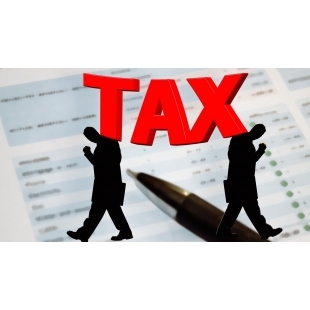
Under the Taxpayer Bill of Rights, all taxpayers have the right to finality of IRS matters
IRS Tax Tip 2022-169, November 3, 2022
By law, taxpayers interacting with the IRS have the right to finality. This right comes into play for taxpayers who are going through an audit. These taxpayers have the right to know when the IRS has finished the audit. This is one of ten basic rights — known collectively as the Taxpayer Bill of Rights.
Here's what taxpayers in the process of an audit, should know about their right to finality:
Taxpayers have the right to know:
The maximum amount of time they have to challenge the IRS's position.
The maximum amount of time the IRS has to audit a particular tax year or collect a tax debt.
When the IRS has finished an audit.
The IRS generally has three years from the date taxpayers file their returns to assess any additional tax for that tax year.
There are some limited exceptions to the three-year rule, including when taxpayers fail to file returns for specific years or file false or fraudulent returns. In these cases, the IRS has an unlimited amount of time to assess tax for that tax year
The IRS generally has 10 years from the assessment date to collect unpaid taxes. This 10-year period cannot be extended, except for taxpayers who enter into installment agreements, or the IRS obtains court judgments.
A statutory notice of deficiency is a letter proposing additional tax the taxpayer owes. This notice must include the deadline for filing a petition with the tax court to challenge the amount proposed.
Generally, a taxpayer will only be subject to one audit per tax year. However, the IRS may reopen an audit for a previous tax year, if the IRS finds it necessary. This could happen, for example, if a taxpayer files a fraudulent return.
More Information:
Publication 1, Your Rights as a Taxpayer
Taxpayer Advocate Service
Subscribe to IRS Tax Tips
Source: https://www.irs.gov/newsroom/under-the-taxpayer-bill-of-rights-all-taxpayers-have-the-right-to-finality-of-irs-matters
US TAX, U.S. TAXUnder the Taxpayer Bill of Rights, all taxpayers have the right to finality of IRS mattersmore -

Nine million people who missed expanded tax benefits still have time to file
COVID Tax Tip 2022-166, October 31, 2022
More than nine million people may qualify for tax benefits but didn't claim them by filing a 2021 federal income tax return. Many in this group may be eligible to claim some or all of the 2021 Recovery Rebate Credit, the Child Tax Credit, the Earned Income Tax Credit and other tax credits. These and other tax benefits were expanded under last year's American Rescue Plan Act and other recent legislation.
The only way to get the valuable benefits is to file a 2021 tax return
Often, people can get these expanded tax benefits, even if they have little or no income from a job, business or other source. This means that many people who don't normally need to file a tax return should do so for 2021, even if they haven't been required to file in recent years.
Eligible people can file a tax return even if they don't receive a letter. There's no penalty for a refund claimed on a tax return filed after the regular April 2022 tax deadline.
The expanded tax benefits include:
An expanded Child Tax Credit. Families can claim this credit, even if they received monthly advance payments during the last half of 2021. The total credit can be as much as $3,600 per child.
A more generous Earned Income Tax Credit. The law boosted the EITC for childless workers. There are also changes that can help low- and moderate-income families with children. The credit can be as much as $1,502 for workers with no qualifying children, $3,618 for those with one child, $5,980 for those with two children and $6,728 for those with at least three children.
The Recovery Rebate Credit. Those who missed out on last year's third round of Economic Impact Payments may be eligible to claim the RRC. Often referred to as stimulus payments, this credit can help eligible people whose third payment was less than the full amount, including those who welcomed a child in 2021. The maximum credit is $1,400 for each qualifying adult, plus $1,400 for each eligible child or adult dependent.
An increased Child and Dependent Care Credit. Families who have care expenses for a child or dependent so they can work or look for work can get a tax credit worth up to $4,000 for one qualifying person and $8,000 for two or more qualifying persons.
A deduction for gifts to charity. Most tax-filers who take the standard deduction can deduct eligible cash contributions they made during 2021. Married couples filing jointly can deduct up to $600 in cash donations and individuals can deduct up to $300 in donations. In addition, itemizers who make large cash donations often qualify to deduct the full amount in 2021.
Free File to stay open until November 17
To help people claim these benefits, Free File will remain open for an extra month this year, until November 17, 2022. People with income of $73,000 or less can electronically file a return for free using brand-name software.
People can also visit ChildTaxCredit.gov to file a 2021 income tax return. Individuals with income below $12,500 and couples with income below $25,000 may be able to file a simple tax return to claim the 2021 Recovery Rebate Credit and the Child Tax Credit.
More Information:
EITC Assistant
Does My Child/Dependent Qualify for the Child Tax Credit or the Credit for Other Dependents?
Am I Eligible to Claim the Child and Dependent Care Credit?
Subscribe to IRS Tax Tips
Source: https://www.irs.gov/newsroom/nine-million-people-who-missed-expanded-tax-benefits-still-have-time-to-file
US TAX, U.S. TAXNine million people who missed expanded tax benefits still have time to filemore -

Grandparents and others with eligible dependents shouldn’t miss out on the 2021 child tax credit
COVID Tax Tip 2022-165, October 27, 2022
Grandparents, foster parents or people caring for siblings or other relatives should check their eligibility to receive the 2021 child tax credit. People who claim at least one child as their dependent may not realize they could be eligible to benefit from the child tax credit.
Eligible taxpayers who received advance child tax credit payments last year should file a 2021 tax return to receive the second half of the credit. Eligible taxpayers who did not receive advance child tax credit payments last year can claim the full credit by filing a 2021 tax return.
People should review the eligibility rules to make sure they still qualify for the credit. The Interactive Tax Assistant can help people who aren't sure. Taxpayers who haven't qualified in the past should also check because they may now be able to claim the credit. The only way to receive the credit is to file a 2021 federal tax return.
What is the child tax credit expansion?
The child tax credit expansion increased the amount of money families can receive per child and expanded who can receive the payments. The credit increased from $2,000 to $3,600 per child for children under the age of six, from $2,000 to $3,000 for children over the age of 6 and raised the age limit from 16 to 17 years old.
The child tax credit expansion applies to tax year 2021 only.
Who qualifies for the child tax credit?
Taxpayers can claim the credit for each qualifying child who has a Social Security number that is valid for employment in the United States and issued by the Social Security Administration before the due date of their tax return. This includes the filing extension if the taxpayer requested the extension by the tax return's original due date.
To be a qualifying child for the 2021 tax year, the child must fit certain criteria.
What are the eligibility factors?
Individuals qualify for the full amount of the 2021 child tax credit for each qualifying child if they meet all eligibility factors and their annual income is not more than:
$150,000 if they're married and filing a joint return, or if they're filing as a qualifying widow or widower.
$112,500 if they're filing as a head of household.
$75,000 if they're a single filer or are married and filing a separate return.
Parents and guardians with higher incomes may be eligible to claim a partial credit.
IRS Free File available until November 17 to help more people receive credits
The IRS Free File program offers eligible taxpayers brand-name tax preparation software to use at no cost. It's free for most individual filers who earned $73,000 or less in 2021. To help more people claim a variety of tax credits and benefits, Free File will remain open for an extra month this year, until November 17, 2022.
Taxpayers who earned more than $73,000 in 2021 and are comfortable preparing their own taxes can use Free File Fillable Forms. This electronic version of paper IRS tax forms is also used to file tax returns online.
More information:
2021 Child Tax Credit and Advance Child Tax Credit Payments Frequently Asked Questions
Subscribe to IRS Tax Tips
Source: https://www.irs.gov/newsroom/grandparents-and-others-with-eligible-dependents-shouldnt-miss-out-on-the-2021-child-tax-credit
US TAX, U.S. TAXGrandparents and others with eligible dependents shouldn’t miss out on the 2021 child tax creditmore




